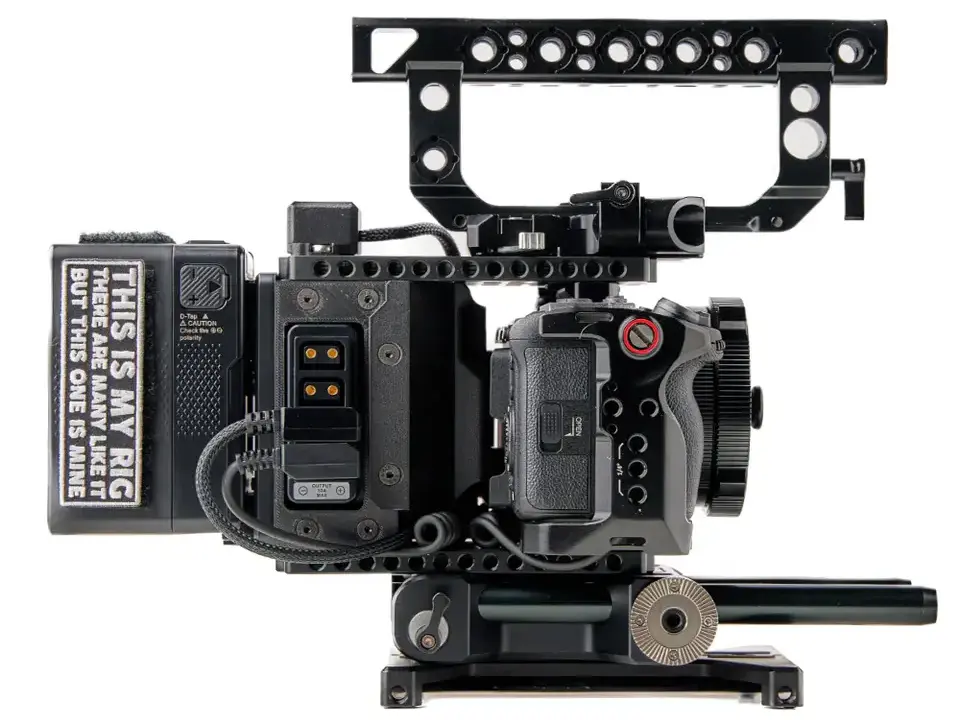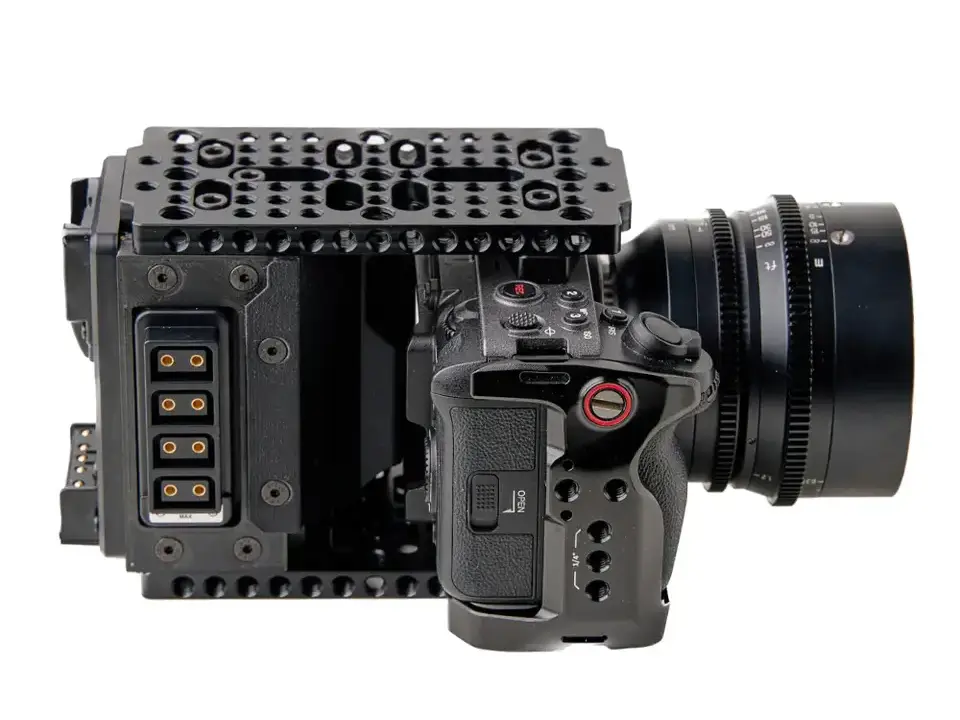
Camera Foundry has introduced its new CineBack rig, designed specifically for the Sony FX3 and FX30 cameras. These cameras, known for their similar build and ergonomic design, can now benefit from the added functionality of the CineBack rig.
The rig features top and bottom plates and is equipped with quad D-Tap outputs, powered by a V-mount battery. As of now, the first three batches of the CineBack rig have already been sold out.
 Defining Cine Cameras
Defining Cine Cameras
Cine cameras are distinguished by several factors, including their advanced codecs, sensor size, recording time, frame rates, and overall branding. However, a key aspect that sets cine cameras apart from hybrid, still-based cameras is their ergonomic design and build, which dictates a specific operational workflow more suited for filmmaking.
 Ergonomics and Design
Ergonomics and Design
The Sony FX3 and FX30, while taking a cine-oriented design approach, still feature the fixed side grip common in hybrid cameras and share dimensions similar to their hybrid counterparts. This makes them a bridge between Sony’s Alpha and FX series.
Features of the CineBack Rig
The CineBack rig by Camera Foundry is a straightforward yet versatile tool. It sandwiches the camera between two metal plates filled with 1/4″ threaded connections, offering numerous mounting options. It includes a V-mount with a quad D-Tap splitter for powering various devices and accessories. Additionally, it features a power switch to prevent unwanted battery drain and a cradle to position the screen at a 90° angle, facing in different directions based on the user’s needs.
 Contents of the Package
Contents of the Package
The CineBack package contains the top and bottom plates, the rear power module with the battery and D-Tap splitter, an Allen wrench, three 1/4″ screws, and a 1/4″-3/8″ adapter. However, additional accessories such as a SmallRig 4183 FX3 Cage and a D-Tap to FZ100 cable (recommended by Kondor Blue) are required for full functionality.
Target Audience
The CineBack is ideal for those who appreciate the Sony FX3 or FX30 but prefer a workflow akin to larger, dedicated camcorders or cine cameras. It adds robustness and a bit more weight to these compact cameras, transforming their workflow and ergonomics without compromising on compactness. Additionally, the large battery capacity and four-way D-Tap output are significant advantages.
News source: https://camerafoundry.com/









